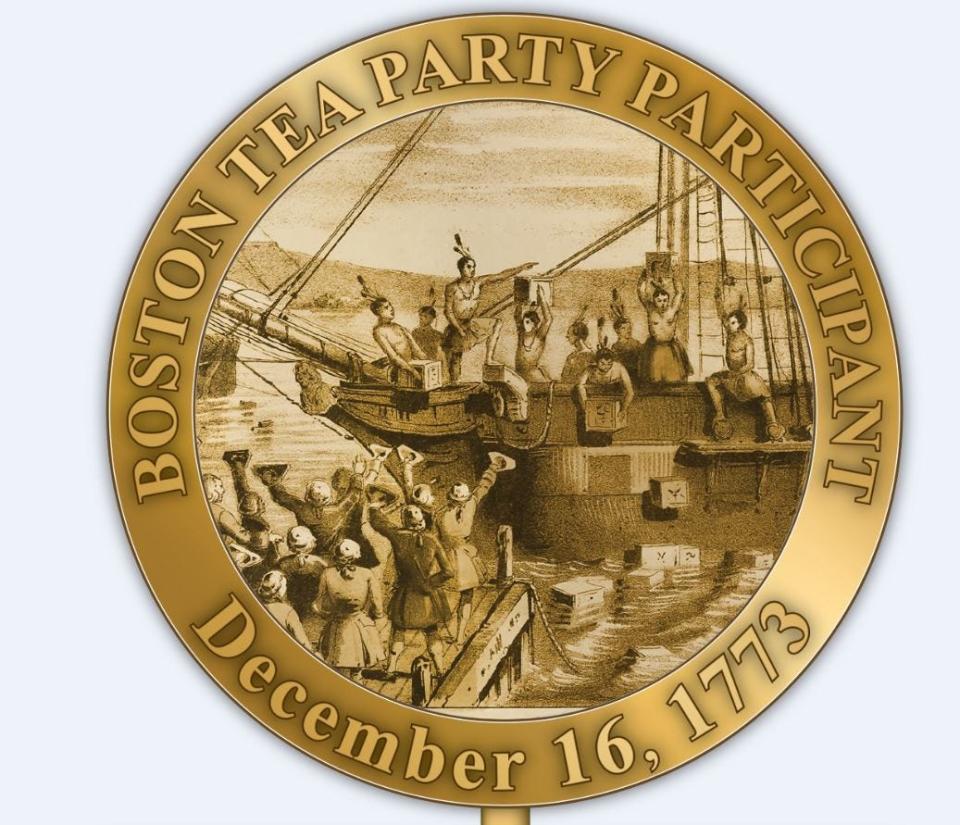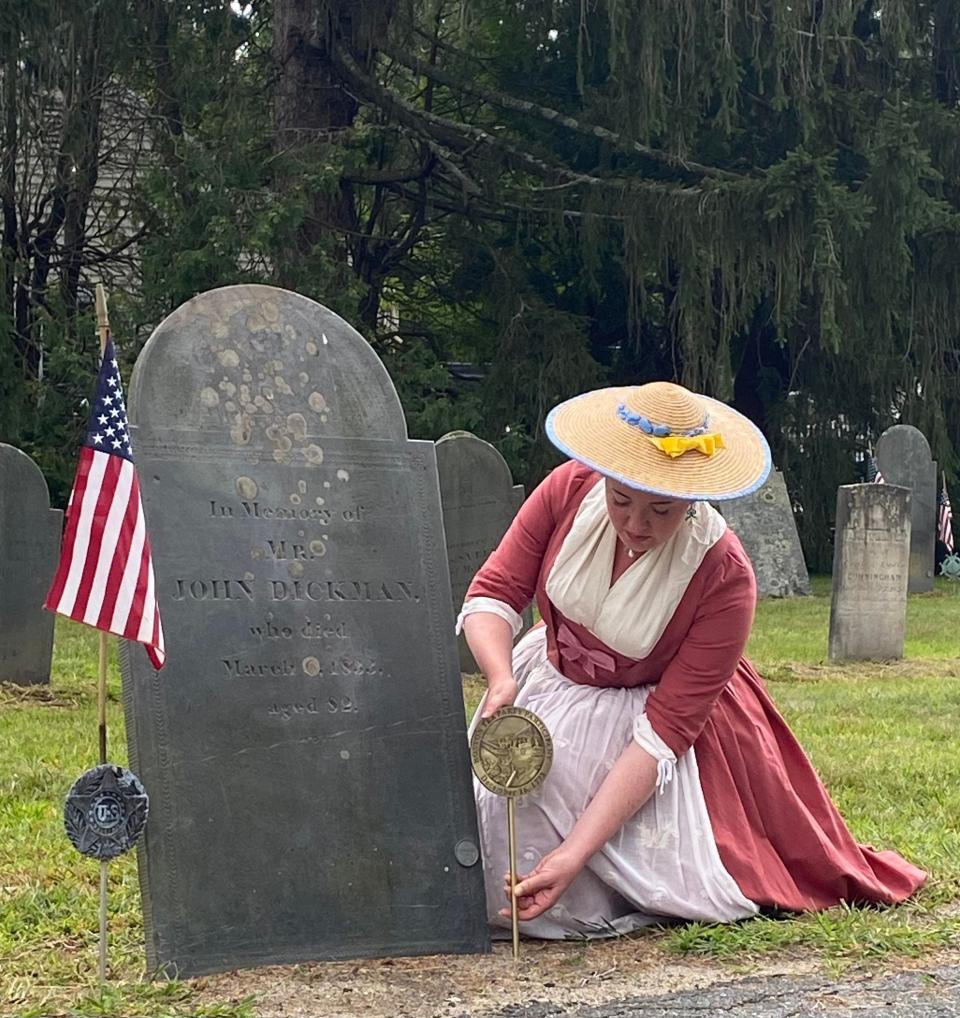Hopkinton man honored for his role in the Boston Tea Party. Why it took 250 years
HOPKINTON — It's been 250 years, but a Hopkinton man is finally being recognized for the role he is believed to have played in one of the most famous incidents in American history.
John Dickman was recognized by the Boston Tea Party Ships & Museum for his likely participation in the Boston Tea Party, a famous act of rebellion that took place on Dec. 16, 1773 in Boston Harbor.
As part of the protest, it is believed that Dickman boarded ships belonging to the British East India Company and threw tea belonging to the British into the harbor.
Boston Tea Party participants swore a secret oath
"The participants were sworn to secrecy, they were not permitted to tell anyone that they had participated in the rebellion," said Anne Mattina, vice president of the Hopkinton Historical Society. "In 1849, there was a call from a Harvard professor, John Gorham Palfrey, who was writing a history of the American Revolution. John Dickman's son-in-law, Artemas Fay, recalled his father-in-law's memories from that time that were told to him."

Mattina said it's possible that Dickman, who lived until 1833, retold the information to family members as he was nearing death. The Historical Society has a letter that Fay wrote to Palfrey, recalling Dickman's involvement in the rebellion.
"I ought to have mentioned his being present after throwing overboard of the tea in Boston," the letter states. "He said he perfectly well recollected how the great long chests went splash into the sea and he related to me the names of those of them who were dead who threw it overboard; that it was agreed not to disclose any name of the party while they were still alive."
Upon reviewing the information, the Boston Tea Party Ships & Museum concluded that Dickman's recollection of the events were too detailed for him to have been merely a spectator, and that he was likely a participant.
Participants' graves to be marked
As part of the 250th anniversary of the Boston Tea Party, the museum is placing markers on the gravestones of all identified participants. On Aug. 27, the museum held a ceremony where they placed a marker on Dickman's grave, which is in Evergreen Cemetery in Hopkinton.
Sweet spot: Hopkinton dad makes it his business to connect with local kids

"Hopkinton and Boston have always been connected in history," Boston Tea Party Ships and Museum Director Kirstin Harris said. "The program itself is hugely important because it is a way of connecting towns with their shared story in one of the most iconic events in American history. It is a tangible link to the past, not only through the markers placed at physical burial sites, but also through the descendants of some of those remembered that have joined us at many of these events,"
Who was John Dickman?
According to Mattina, Dickman was born in either 1749 or 1750. While his family operated a farm in the Woodville section of Hopkinton, Dickman worked for his uncle, who was involved in shipping in Boston — including smuggling operations.
The Boston Tea Party was done in defiance of the Tea Act, a British rule passed earlier in 1773 that allowed the British East India Company to sell tea in the colonies, tax-free, as a way to cut down on illegal tea trade that was taking place in the city. Given Dickman's association with his uncle's business, that likely served as motivation to get involved.
Mattina said that nobody currently in the Historical Society knew about Dickman's involvement in the tea party, and that the organization only began researching it when the museum contacted it.
"At some point, people in the Historical Society knew about this," Mattina said. "We have a handwritten note in our genealogy records that states Dickman participated in the Boston Tea Party, but we don't know who wrote it. It really wasn't something that was known prior to this. It's really exciting to be researching this and learning all about a prominent citizen."

'Unfortunate and disappointing': Elected official used multiple pseudonyms in criticizing political opponents
Dickman was also involved in other elements of the American Revolution, including participating in a siege that resulted in the British being driven from Boston on March 17, 1776 (now known as Evacuation Day), and helping drive British foragers from Rhode Island later in the decade.
Mattina said there's a lot of interest in the recent discovery, and that she's excited to talk to fourth grade students in Hopkinton during the society's annual visits to students learning about the American Revolution.
"People like Dickman make it feel so real," Mattina said. "He was going back and forth between his farm and helping his family, he had seven or eight kids, and serving in the militia in Boston. We tend to focus on the more prominent members who participated in the revolution, and it's wonderful what this museum is doing, identifying everyone who was involved
"And John Dickman did more than his part."
This article originally appeared on MetroWest Daily News: Boston Tea Party museum confirms Hopkinton Revolutionary participated

